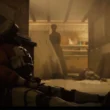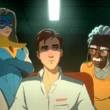Hell is Us presents itself as a unique narrative-driven adventure that challenges players to explore a richly crafted world without the usual hand-holding typical in modern games. From the outset, players are warned: there are no quest markers, no clear maps, and no hints guiding them through the journey, inviting a more instinctual exploration of Hadea’s dark landscape.
Set in a fictional setting in the late 1900s, Hell is Us intertwines the grim realities of a civil war with supernatural elements, featuring ghostly monsters and the devastation they bring. Players navigate through the conflicts between two factions, the Palomists and the Sabinians, experiencing firsthand the brutal consequences of their bloodshed. The game doesn’t shy away from depicting the horrors of war, serving as a reminder of the dark depths to which humanity can sink.
Throughout your exploration, you’ll encounter various characters in need—each side quest adding depth to the world, even though they may not directly tie to the main narrative. These encounters require players to pay close attention to environmental cues and past conversations, enhancing the sense of immersion and personal investment in the world.
The core gameplay revolves around problem-solving and exploration, where success often hinges on careful observation and critical thinking. The puzzles, reminiscent of classic point-and-click adventures, demand that players engage deeply, but they are designed to prevent frustration, ensuring that players can progress without feeling lost. Clues are scattered throughout the environment, making solutions feel earned rather than handed to you.
As players delve deeper into Hadea’s lore, they unveil a history of betrayal and lost loves that led to the current turmoil. However, the protagonist Rémi’s personal narrative—his return to a war-torn land he was smuggled out of as a child—feels underdeveloped and lacks the emotional weight one might expect. The dialogue often falls flat, leaving Rémi and his backstory feeling like a missed opportunity amid the more compelling world-building.
Visually, the game contrasts war-ravaged areas with mystical locations, allowing for varied and immersive environments. However, movement can feel rigid at times, hampering exploration. The combat system, which draws inspiration from the soulsborne genre, emphasizes aggression and risk-taking. Players can regain health through offensive actions, encouraging a dynamic fighting style. Yet, the combat can sometimes feel shallow due to limited enemy variety and abilities.
While the combat mechanics embody elements of challenge, the game’s respawn system and character customization allow for a more forgiving experience compared to its inspirations. Although enemies respawn, players have the option to clear areas permanently and customize their experience to emphasize exploration over combat.
In conclusion, while the overarching narrative of Hell is Us may not fully deliver on all fronts, the journey through Hadea offers an engaging experience marked by rich environments, thought-provoking exploration, and dynamic combat. The game’s promise of guideless adventure holds true, creating a sense of accomplishment with every discovery, even as its narrative falters towards the end.











